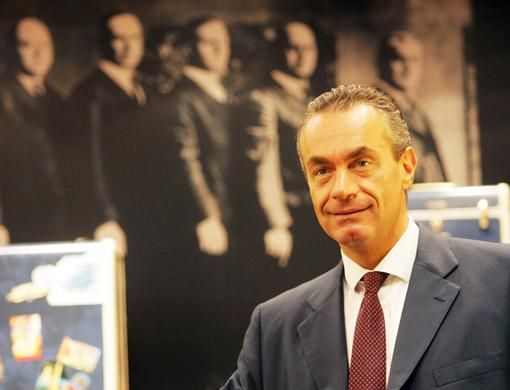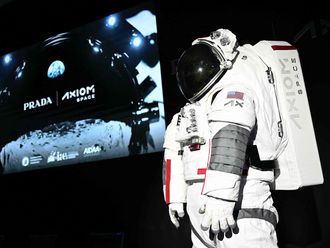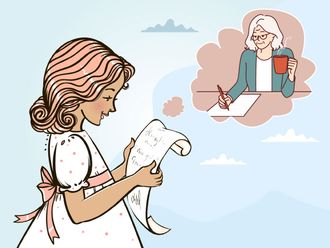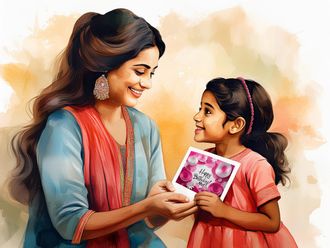It's no wonder that Marcello Bottoli loves living out of a suitcase. As president and CEO of the world's largest luggage maker, Bottoli spends three weeks a month travelling to the far corners of the globe overseeing the transformation of Samsonite from a "fat lady to a svelte beauty".
It's a makeover that will take some imagination. After all, for better or worse, since 1969 Samsonite has been associated in the public imagination with a 300-pound gorilla that jumped on the suitcases to show how tough they are. Now that Bottoli has taken over, it's goodbye to the gorilla and hello to the likes of Milla Jovovich, Jean Reno, Sir Richard Branson and Isabella Rossellini – the new ambassadors for the brand.
Bottoli is no stranger to fashion and luxury. He joined Samsonite in March 2004 after leading Louis Vuitton as CEO from 2001. From his tenure at Louis Vuitton, Bottoli was inspired to inject a stronger fashion and design discipline into Samsonite.
An Italian of mixed Brazilian-Italian descent, Bottoli began his career as a brand manager for fast moving consumer goods (FMCG) giant Procter & Gamble, working in France and the US until 1989. He spent the next two years with the Boston Consulting Group in Paris and Milan. He then embarked on what was professionally his most rewarding stint ("after Samsonite", he's quick to add): a decade at Reckitt Benckiser, working in their marketing, research and development departments in Spain, France, the Netherlands and the UK.
Then high fashion beckoned and Bottoli left to lead Louis Vuitton. He joined the fashion house in September 2001, when it was reeling from the aftermath of the 9/11 attacks, when the world travel industry was in a massive slump. Unlike his competitors, Bottoli did not retrench a single employee, preferring instead to shift focus to domestic consumers.
Bottoli says he's a citizen of the world, having lived in nine countries on three continents, and is proficient in six languages. With a doctorate in business administration from Bocconi University in Milan, he also spends time teaching business executives and students in France and Spain.
When speaking about business, his other passion slips out – sailing. So what's the connection? Bottoli feels that businesses shouldn't lose sight of "north" when the waves of providence get too high; they mustn't lose their bearing when times get tough. It's a metaphor he extends beyond work to life in general. And while he's charting a steady course, Bottoli believes that he's yet to find his "true north".
I
It's difficult to say what I am good at. But … one of my strengths is that I am able to synthesise well. It's hard for me to get lost in detail. Normally I am able to distill a few big things in a subject and focus on them. I am an extremely persistent and consistent person. I do not give up on anything if I believe it is the right thing to do.
I always pack three books or more in my suitcase because I read a book a week and have to read every night before I sleep. I always pack my iPod because I love music, my camera … and my gym equipment because I am fanatical about working out every morning. The rest doesn't matter.
I count on my family a lot for support. My real friends are few – and they are my rocks. I can count on them, as they can on me. My two boys, 7 and 5, are affectionate, smart and like doing the things I like. ln my daily life, I did not have to change much after becoming a father. It was a natural process. Yet the bad part of it is that because I travel so much I do not spend enough time with them. My sons love travelling, sailing and diving as much as I do.
I am not good at telling myself that I have to be motivated. Either you are or you are not. It's about that little engine in your guts that turns on every morning. When I don't feel it [motivated], I have to change and do something else. What keeps me going is the passion for what I do.
In my moments of weakness I tend to continue doing things. I am not the sort of person who stops working to reflect. I keep myself occupied and I just push away the problem until it naturally solves itself.
The two greatest luxuries for me are time and space. In practical terms, I cherish my time and try to use it effectively, because every minute gone does not come back. The second biggest luxury I allow myself is space. In all my houses and boats, I prefer a few large spaces over cramped surroundings. All my houses have always had large open spaces. My house on the Spanish island of Ibiza is my favourite.
I have always been a traveller since I was a little child, since all of my family were great travellers. I have always been fascinated by new and different things. I spend probably 70 per cent of my time travelling. I get nervous if I spend more than three days of the week in an office … I do not like it, I need to see something different. I am naturally a very curious person.
My other passion is sailing. I am truly happy when I am on the water. I sail in the Cape Cod area in the US, the Mediterranean and the Caribbean.
Me
Me and my young years:
I grew up in Brazil and Italy, studied in Switzerland and spent my university years in Switzerland and Italy.
After graduating I immediately left Italy. I worked in France, the US, Mexico, the Netherlands, Spain and England doing different things.
My father being Brazilian, I spent several years in Brazil before my parents divorced. I have been exposed to both South American and European culture equally. My best memories are of my student years in Switzerland … [when] I finally became independent of my family and got to live alone – first in boarding school and then in an apartment. Though I love my family dearly, being free of them was interesting and exciting. One might not actually do anything very different, you just feel free.
Though I am Italian, in reality I have spent most of my life around the world. I haven't been in Italy for over 25 years now. My personality is more international than rooted in any one country. Somewhere, genetically I am Italian. But having lived in nine countries across three continents, I am more of a melting pot. I like that.
They say Italians have a natural sense of aesthetics, which is probably best seen in what they do in product design. So I guess that is an influence.
I have never been a very good student. I have always been very good at what I really like and never paid interest to what I did not like. If you look at my [results] in university, I got the best scores in the subjects that I really loved and the worst scores in subjects I did not care about. I am very much an intuitive and sensitive person in that sense. If I like something, I devote myself body and soul to it and usually succeed. If I don't like something, I just leave it.
I came out of university extremely young. I had entered at 16 and graduated at 20. Study to me was a good thing, but there were so many subjects I did not like and I was itching to work. Taking up a job and being truly independent held more appeal.
I had never received any help from my family and also wanted to be more active in life.
Me and starting out:
My first job was with our family-owned pharmaceutical business, of which I am still a shareholder. Then I decided to make my own career path, so I joined Procter & Gamble where I marketed FMCG in France and the US.
P&G was a fantastic school for a marketer. One of the big things I learned there was discipline. They tried to make marketing a science instead of an art. I think it is a combination of both – you need art on top of some very solid science. And P&G is very good at that, probably the best in the world. At the same time, the fact that after five years there I left to do something else [underscores] the fact that science is not everything, you need the art as well.
At Reckitt Benckiser, I learnt a completely new set of skills. With the exception of Samsonite, that was probably the best professional experience I have had, mainly because of the environment and work culture of the company. There I learned a lot from a company that was opposite to P&G: it was agile, quick, rapid in decision-making and quick to act. One of our mantras there used to be, "When in doubt, act!"
They used your experience, cut through the clutter and did something. The other interesting thing was that we – a small group of 8-10 people – really created the company as it is today. That creation process, shaping a company into what it is, was a magical experience.
For 10 years, I worked with Reckitt Benckiser, a competitor to P&G. Then I entered the fashion business by joining Louis Vuitton. Luxury and fashion have always attracted me, as they do to most people. I have been a consumer of luxury fashion for quite a while and the people at Louis Vuitton lured me into joining them. What really triggered me into taking the plunge was that compared to FMCG, the emotional side of selling your product is much more important when you are marketing luxury goods.
In FMCG marketing, rationality rules. Marketing high fashion and accessories is all about emotion: you have to feel for the brand and convince people to share those feelings. It's a more difficult yet more complete job – and more exciting when it works.
Me and travelling:
Every time I go on a trip, I take my little camera along to take pictures – there is always some inspiration. I like to think and do business when I travel. For me, the best place to work is on a plane. If it's night on a long-haul flight, I sleep. If it's daytime, I work ... listening to music on my iPod and working on my computer. That's where I get my best ideas and that's where I can put them in order. I sift through all the experiences of the past and come up with strategies.
Right now I have been travelling for two weeks – I have been in Japan, Korea, here, Saudi Arabia tomorrow then I will fly to the US. On the flight home I will sit down and write down all the ideas that have emerged from the past days. I try to synthesise the thoughts and stimuli I have been exposed to and normally a few good ideas emerge. Half of them may not work, but half will be worthwhile. It's a process of distillation.
Myself
Why do you describe Samsonite as a sleeping beauty? It seems more like a robust, hardworking brand.
Samsonite was founded in 1910 and has been at the forefront of the market for 80 of those 97 years. Over the last two decades, for a number of reasons and circumstances, the company fell asleep. From a product standpoint, from a marketing perspective, the brand was still at the forefront but without much initiative. It was a great asset and a great material to do something with.
There were three fundamental reasons that prompted me to leave Louis Vuitton and join Samsonite.
The first was the brand itself. With Samsonite I was intrigued by the challenge of taking a fairly well-known brand, one that was well-established around the world, and turn it around.
It was something I had never done before.
Second, the partners with whom I invested in the company were people I trusted and liked very much. Third, it was a chance for me to embark on an entrepreneurial venture, because I could buy part of the company.
Fashion was just a part of the restructuring. The whole story goes back to the sleeping beauty idea. We had this wonderful brand, one known around the world and perceived as being solid and strong.
But that wasn't good enough. It's OK for the functional side of our business, but there is an emotional side to our business. We needed to create a bond with the potential purchaser. So the question was: how do we create an emotional link.
If you look at bags, the smaller kind, they are not different from an accessory. The relationship is more emotional than functional. What we tried to do is to make the bag an accessory, rather than a piece of luggage … we designed products that were not luggage and a lot of small pieces.
Why? The smaller the piece, and closer it is held to the body, the deeper the emotional bond. We also diversified into shoes, leather goods and accessories, making Samsonite more of a lifestyle brand. It's also about bringing excitement into the brand. We did two things which are not exactly rocket science, but they worked.
The first was collaborating with designers: Alexander McQueen, Marc Newson, Matthew Williamson and Cameron Silver, the LA-based guru of vintage collections. The second was re-introducing many of our 1960s master designs and reinterpreting them in a modern way.
What have been the biggest challenges in your career and how did you overcome them?
To be honest, there have been just two major professional challenges I have faced. One was the aftermath of 9/11 at Louis Vuitton and the second was the turnaround of Samsonite. With Louis Vuitton, the issue was how not to panic and how to keep our 'north' [direction] when everybody else around was losing it. The inherent strength of the company was a powerful help. And we always believed that 9/11 … was a temporary phenomenon.
We were certain it would last longer than other crises, but we were also certain that at some point in time, things would return to normal. A lot of companies did a lot of stupid things because they panicked … learning and managing that process was a big experience. At the time lot of companies were closing stores and firing people, because stores were empty.
One of the things that I am most proud of is that we did not fire one person after 9/11, even though we had stores that were losing money. I saw it as an opportunity – if you show your people you are loyal to them, you are going to get an incredible amount of loyalty in return.
Open case
Open case












